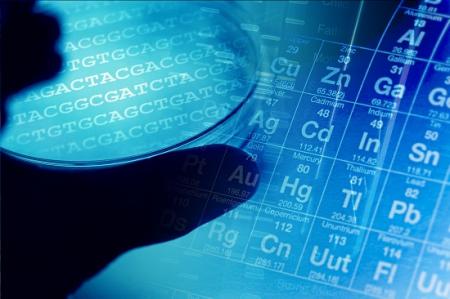 Drug discovery and development is a costly process that can last more than 10 years. The possibility of failure can be high – and expensive.
Drug discovery and development is a costly process that can last more than 10 years. The possibility of failure can be high – and expensive.
Testing if a potential drug is carcinogenic often comes near the end of the drug development process. If the drug is then shown to cause tumours, drug companies need to spend a lot of time, money and effort in additional testing. This process can slow down the speed at which effective, safe drugs can be approved for the market.
The EU- and industry-funded project MARCAR found special features of genes – known as epigenetic biomarkers – that changed if exposed to a cancer-causing drug. These novel molecular tags allow a carcinogenic drug to be potentially identified much earlier in the required testing process than was possible before.
“This will be particularly useful in developing medicines used for long-term therapy of patients,” says project coordinator Jonathan Moggs of Novartis Pharma in Switzerland. “By discovering the epigenetic mechanisms by which the cells in animals react to drugs, we are paving the way to how future drug safety assessment could be made at the molecular level.”
The project also developed a non-invasive tumour imaging technique that has the potential to significantly reduce the number of animals used in the early stages of drug development.
Markers for cancer-causing drugs hiding in the epigenome
Researchers working on MARCAR – which was funded by the Innovative Medicines Initiative, a public-private partnership between the EU and the European pharmaceutical industry – looked for these biomarkers in the epigenome, the chemical structure that packages our DNA and tells our genes what to do. Every cell in the human body contains a full set of genes and the epigenome tells each individual cell which genes should be activated. For example, in the eye, light receptor genes are switched on, but genes for hair growth are switched off.
“Genes can be either on or off or poised to be activated,” said Moggs. “The epigenome integrates signals received by a cell and then modifies gene activity accordingly.”
To investigate, they examined a special kind of non-coding RNA (called Meg3) in liver cells. Non-coding RNA (ribonucleic acid) generally regulates gene activity. But when Meg3 is activated, it’s associated with cells reverting to a stem-cell-like state, which is an early hallmark of cancer.
MARCAR’s researchers took a drug which is known to cause cancer, introduced it to mouse liver cells, and Meg3 was activated. They concluded that it was a valuable indicator of cancer risk.
Looking at epigenetic DNA modifications led to another potential biomarker discovery. DNA is made up of four structural bases (A,C,T and G). When exposed to carcinogenic drugs, modified (methylated) “C” or cytosine bases in mouse liver cells were changed in very specific identifiable patterns. These, the researchers say, could be used as another potential early indicator of cancer-causing drugs.
‘Humanised mice’ and cancer risk
Unfortunately, what is cancerous for mice may not necessarily affect humans, and vice versa. One key example of this is a common epilepsy drug phenobarbital: although used by hundreds of human patients for many years without evidence of carcinogenic effects, the drug does cause cancerous tumours in mouse liver.
Researchers involved in the MARCAR project took an important first step towards better understanding this issue by inserting human receptors for the epilepsy drug into mice using genetic engineering. The idea was that now, the humanised mice wouldn’t develop cancer. That isn’t what happened, but what the researchers did find was that they developed fewer tumours than the normal mice, and that their tumours were also smaller than usual. As yet, more research is needed to see whether this approach will be effective for human cancer risk assessment.
Another spin-off result of MARCAR was the development of a new methodology to view the tumours – by a mini MRI scan. Normally mice are sacrificed for this kind of research, but by using the MRI scans the scientists could reduce the number needed. Instead of killing the mice and examining their tumours at different stages of development, a smaller number of mice were re-scanned several times, giving scientists a more accurate picture of the tumours’ growth.
MARCAR’s work highlights new ways for researchers to evaluate how relevant the results from these studies might be for humans. In the future, Moggs hopes that scientists will be able to use MARCAR’s results to examine the workings of the epigenome further, specifically in response to drugs, to enhance both safety assessment and the healing potential of innovative medicines.
Project details
- Project acronym: MARCAR
- Participants: UK (Coordinator), Austria, Denmark, France, Belgium, Germany
- Project N°: 115001
- Total costs: € 13 110 690
- EU contribution: € 6 049 578
- Duration: January 2010 to June 2015
